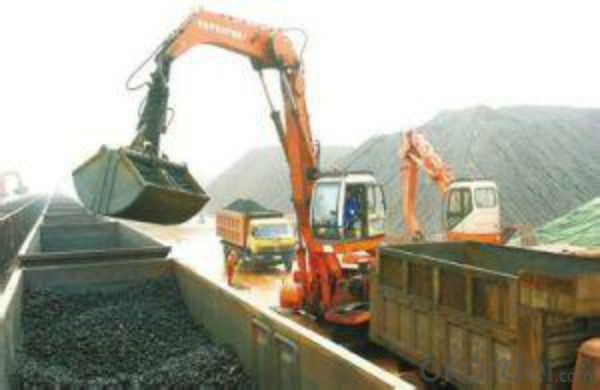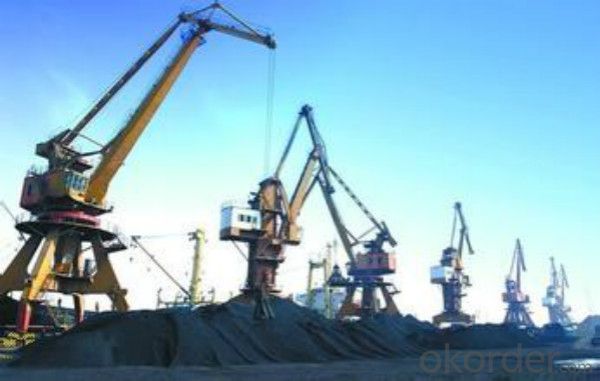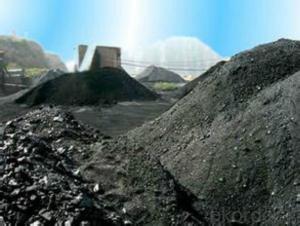High FC Low A low S Met Coke Made in China
- Loading Port:
- Qingdao
- Payment Terms:
- TT OR LC
- Min Order Qty:
- 1500 m.t.
- Supply Capability:
- 20000 m.t./month
OKorder Service Pledge
OKorder Financial Service
You Might Also Like
Description
Met Coke is a carbon material resulting from the manufactured purification of multifarious blends of bituminous coal. its medium-grade composite contains a high occurrence of unstable components. We can provide products in our general specifications or as customers' requirement. We are willing to cooperate sincerely with friends from all over the world and develop together prosperously. We follow the operation philosophy of contract-abiding, trustworthy, first-rate service and to achieve mutual benefits, and win-win situation. We have established an extensive cooperation relationships with circles of international trade, industry, science and technology, and financial, which established a bridge to connect China and Internation market.
Features
It is widely used in casting and metallurgy Smelting every tons Irons need about 0.4 to 0.6ton coke. As the reducing agent in the steel-making and foundry industry. It is playing more and more crucial role in the steel industry.
Specification
Item No. | Ash (%) max | S (%) max | F.C. (%) min | V.M (%) max | Moisture (%) max | P (%) max | CSR (%) min | CRI (%) max | Cal.Value (≥Kcal/Kg) |
NF-M001 | 9 | 0.6 | 89.5 | 1.2 | 5 | 0.035 | 65 | 25 | 7250 |
NF-M002 | 10.5 | 0.6 | 88 | 1.2 | 5 | 0.035 | 65 | 25 | 7100 |
NF-M003 | 12 | 0.6 | 86.5 | 1.5 | 5 | 0.035 | 63 | 28 | 6900 |
NF-M004 | 13 | 0.6 | 85.5 | 1.5 | 5 | 0.035 | 60 | 30 | 6800 |
Pictures


FAQ
1 What is the packing?
Packaging Details: | 1. jumbo ton bag |
2 Payment terms?
D/P, L/C,T/T with advanced payment
- Q:What is carbon offsetting in the hospitality industry?
- Carbon offsetting in the hospitality industry refers to the practice of counterbalancing the greenhouse gas emissions produced by hotels, resorts, and other hospitality businesses. It is a way to compensate for the carbon footprint created by various activities within the industry, such as energy consumption, transportation, waste management, and water usage. The process of carbon offsetting involves calculating the amount of carbon dioxide or other greenhouse gases emitted by a hospitality establishment and then investing in projects that reduce emissions elsewhere. These projects can include renewable energy initiatives, reforestation efforts, or energy efficiency programs. By supporting such projects, the hospitality industry aims to neutralize or offset its own carbon emissions, effectively reducing its impact on climate change. Hotels and resorts can choose to purchase carbon offsets from specialized organizations that facilitate carbon offset projects. These organizations ensure that the offsets are verified and comply with recognized standards, such as the Verified Carbon Standard or the Gold Standard. By investing in verified offsets, the hospitality industry can have confidence that their contributions are making a real and measurable difference in reducing global greenhouse gas emissions. Carbon offsetting in the hospitality industry is not only a way to demonstrate environmental responsibility, but it can also have economic benefits. Many travelers are becoming increasingly conscious of the environmental impact of their accommodation choices and are actively seeking out hotels and resorts that prioritize sustainability. By implementing carbon offsetting programs, hospitality businesses can attract environmentally conscious guests and differentiate themselves in a competitive market. Furthermore, carbon offsetting is just one part of a broader sustainability strategy within the hospitality industry. Many hotels and resorts are also adopting energy-efficient practices, implementing waste reduction measures, and promoting water conservation. By combining these efforts with carbon offsetting initiatives, the hospitality industry can contribute to a more sustainable future while also improving their bottom line. In summary, carbon offsetting in the hospitality industry involves investing in projects that reduce greenhouse gas emissions to compensate for the carbon footprint created by hotels and resorts. It is a way to neutralize the environmental impact of the industry and demonstrate a commitment to sustainability. By implementing carbon offsetting programs, the hospitality industry can attract environmentally conscious guests, differentiate themselves in the market, and contribute to a more sustainable future.
- Q:What are the consequences of increased carbon emissions on human health?
- Human health is significantly affected by the increase in carbon emissions. One immediate consequence is the decline in air quality. Harmful air pollutants, like particulate matter, nitrogen oxides, and ground-level ozone, are formed due to carbon emissions. These pollutants can lead to respiratory problems, such as asthma, bronchitis, and other chronic obstructive pulmonary diseases. They can also worsen existing respiratory conditions, resulting in more hospitalizations and premature deaths. Moreover, carbon emissions contribute to climate change, which has extensive effects on human health. Rising temperatures can worsen the frequency and intensity of heatwaves, causing heat-related illnesses and deaths. Vulnerable populations, such as the elderly, children, and those with pre-existing health conditions, are particularly affected by heat stress. Climate change also influences the spread of infectious diseases. Changes in temperature and rainfall patterns can alter the behavior and distribution of disease-carrying vectors like mosquitoes and ticks. This can increase the transmission of vector-borne diseases, including malaria, dengue fever, and Lyme disease. Additionally, climate change can disrupt food and water supplies, leading to malnutrition and an elevated risk of waterborne diseases. Another consequence of carbon emissions is the increased occurrence of natural disasters, like hurricanes, floods, and wildfires. These events can cause physical injuries, displacement, and mental health issues, such as post-traumatic stress disorder. The destruction of healthcare infrastructure during disasters further hampers access to necessary medical care, aggravating health problems. It is important to note that vulnerable populations, such as low-income communities, indigenous communities, and developing countries, are disproportionately affected by the health impacts of increased carbon emissions. These groups often face limited access to healthcare, making them more susceptible to the consequences. In conclusion, the effects of increased carbon emissions on human health are severe. From the deterioration of air quality to the spread of infectious diseases and the occurrence of natural disasters, the impacts are extensive and pose significant risks to individuals and communities. It is crucial to mitigate carbon emissions and invest in sustainable practices to protect human health and establish a healthier and more sustainable future.
- Q:What do you mean by carbon fiber for 1K, 3K, 6K and 12K?
- Upstairs copy so much, people watching tired not tired.1K, 3K, 6K, 12K refers to the carbon fiber yarn containing the number of filaments, K is unit (thousand), 1K is 1000 followed, 3K is 3000, and so on, and so on!
- Q:What are the alternatives to fossil fuels for energy production?
- Different options exist for energy production beyond fossil fuels, each with its own unique advantages and challenges. These options encompass: 1. Renewable Energy Sources: Renewable energy sources tap into constantly replenished natural resources such as solar, wind, hydroelectric, and geothermal energy. Solar energy converts sunlight into electricity using photovoltaic cells, while wind energy harnesses the power of wind to generate electricity. Hydroelectric energy is generated through the force of flowing water, typically from dams or rivers, and geothermal energy utilizes the Earth's core heat. These sources offer clean and nearly unlimited energy, reduce greenhouse gas emissions, and promote energy independence. However, they necessitate a substantial initial investment and are subject to limitations based on geographical location and weather conditions. 2. Nuclear Energy: Nuclear power plants produce electricity through nuclear fission, which involves splitting atoms of uranium or plutonium to release energy. Nuclear energy is highly efficient and emits no greenhouse gases during operation. It has the potential to provide consistent baseload power and significantly reduce reliance on fossil fuels. Nevertheless, concerns arise regarding the storage and disposal of nuclear waste, the risk of accidents, and the potential for nuclear weapons proliferation. 3. Bioenergy: Bioenergy utilizes organic materials like agricultural waste, wood pellets, or dedicated energy crops to generate heat, electricity, or biofuels. Biomass can be burned directly or converted into gaseous or liquid forms, such as biogas or bioethanol, to replace fossil fuels. Bioenergy is advantageous as a readily available and carbon-neutral energy source. However, it may compete with food production, necessitate significant land use, and raise concerns about deforestation and biodiversity loss if not sustainably managed. 4. Tidal and Wave Energy: Tidal and wave energy technologies harness the power of ocean currents and waves to generate electricity. These sources offer predictability and the potential for a consistent and reliable energy supply. However, the technology is still in its early stages, and challenges such as high upfront costs, environmental impacts, and limited geographic availability need to be addressed. 5. Hydrogen Fuel Cells: Hydrogen can be used as a fuel source in fuel cells to produce electricity. Hydrogen fuel cells combine hydrogen with oxygen from the air, generating electricity and water vapor as byproducts. Hydrogen is abundant and can be produced from various sources, including renewable energy. However, challenges include the high costs associated with production, storage, and distribution infrastructure, as well as the need for advancements in hydrogen storage technology. It is essential to recognize that a combination of these alternative energy sources, coupled with improvements in energy efficiency and conservation, is likely to create a more sustainable and resilient energy future. This approach will reduce our dependence on fossil fuels and mitigate the impacts of climate change.
- Q:How can I see if a battery can be used to recharge it?Can not all carbon batteries charge?
- Final conclusion:Carbon batteries, alkaline batteries are not charged, the voltage is 1.5V, nickel cadmium batteries, nickel hydrogen batteries can charge voltage 1.2VPay special attention to the risk of leakage or explosion if you charge to a carbon battery or alkaline battery
- Q:Rod box material, there is a kind of material called carbon fiber, who knows this material is good?
- Very good, carbon fiber is made of organic fiber after a series of heat treatment into, inorganic fiber with high performance carbon content is higher than 90%, is a new material with excellent mechanical properties, the intrinsic properties of natural carbon material with, and both the textile fiber soft processing, is a new generation of fiber. Carbon fiber is a new dual-use material for military and civilian use. It is the key material of technology intensive and politically sensitive. It is the only material that does not drop in the high temperature inert environment above 2000 degrees celsius. Carbon fiber steel accounted for less than 1/4, the tensile strength of composite is generally above 3500Mpa, is 7-9 times that of steel, carbon fiber has superior corrosion resistance, it can also be safe and sound in the dissolution of gold and platinum "aqua".
- Q:What is the carbon content of different types of soil?
- Various factors, such as climate, vegetation, and land management practices, can greatly influence the carbon content of different types of soil. Generally, soils with higher levels of organic matter exhibit higher levels of carbon. For instance, peat soils boast the highest carbon content among all soil types, ranging from 30% to 60%. These soils form in wetland areas where the decomposition of organic matter is hindered by water saturation, resulting in the accumulation of substantial amounts of carbon over time. Forest soils also tend to possess relatively high carbon content, typically falling between 1% and 10%. Forests continually supply organic matter through litterfall, contributing to the build-up of carbon in the soil. In contrast, agricultural soils generally exhibit lower carbon content compared to peat or forest soils. Factors such as crop rotation, organic amendments, and tillage practices influence the carbon content of agricultural soils. Consequently, the carbon content in these soils can range from less than 1% to around 6%. Grassland soils may have carbon contents similar to agricultural soils, depending on management practices. However, in undisturbed grasslands with high plant productivity, the carbon content can be relatively higher, ranging from 2% to 8%. In arid and desert regions, soils tend to display lower carbon content due to limited vegetation and slower rates of organic matter decomposition. Typically, the carbon content in these soils is less than 1%. It is important to acknowledge that these ranges are generalizations, and the carbon content of soil can vary both within and between soil types. Additionally, alterations in land use, such as deforestation or the conversion of grasslands to agriculture, can have a significant impact on soil carbon content.
- Q:How does carbon affect the formation of acid rain?
- Carbon does not directly affect the formation of acid rain. Acid rain is primarily caused by the emissions of sulfur dioxide (SO2) and nitrogen oxides (NOx) from the burning of fossil fuels, such as coal and oil. However, carbon dioxide (CO2) emissions, which are also released from burning fossil fuels, contribute to climate change and indirectly affect the formation of acid rain. The increased levels of carbon dioxide in the atmosphere trap heat, leading to global warming. This, in turn, alters weather patterns and increases the frequency and intensity of extreme weather events. These changes can enhance the formation of acid rain by altering the dispersion patterns of sulfur dioxide and nitrogen oxides. Additionally, the combustion of fossil fuels that release carbon dioxide also releases sulfur dioxide and nitrogen oxides as byproducts. These gases can be converted into sulfuric acid and nitric acid respectively when they react with water, oxygen, and other chemicals in the atmosphere. The increased combustion of fossil fuels due to higher carbon dioxide emissions can result in more sulfur dioxide and nitrogen oxides being released into the atmosphere, exacerbating the formation of acid rain. Therefore, while carbon dioxide itself does not directly contribute to the formation of acid rain, its emissions indirectly contribute to the conditions that lead to acid rain by amplifying the release and dispersion of sulfur dioxide and nitrogen oxides. Reducing carbon dioxide emissions, along with sulfur dioxide and nitrogen oxide emissions, is crucial in mitigating the formation of acid rain and its harmful effects on the environment and human health.
- Q:How is carbon used in the production of lubricants?
- Carbon is used in the production of lubricants as it forms the base of many lubricant formulations. Carbon compounds, such as hydrocarbons, are used as the primary ingredient in lubricants to provide lubricating properties. These compounds help reduce friction and wear between moving parts, thus improving the efficiency and lifespan of machinery and equipment.
- Q:What is coal?
- Coal, a sedimentary rock primarily composed of carbon, is black or brownish-black in color and contains various other elements such as hydrogen, sulfur, oxygen, and nitrogen. It forms from the remains of plants that lived and died millions of years ago, accumulating in swampy environments. Over time, the layers of plant material experience high pressure and heat, resulting in coal formation. As one of the most abundant fossil fuels on Earth, coal has been utilized as an energy source for centuries. It is typically extracted from underground or surface mines and exists in different forms, including anthracite, bituminous, sub-bituminous, and lignite, each with varying carbon content and heating value. Due to its high carbon content, coal is primarily employed for electricity generation and fueling industrial processes. When burned, it releases heat energy that is converted into electricity through the utilization of steam turbines. Nevertheless, the combustion of coal also emits greenhouse gases and other pollutants, contributing to air pollution and climate change. Apart from its use as a fuel, coal finds application in the production of steel and cement, as well as various industrial processes. It is a versatile resource that has played a pivotal role in the advancement of modern societies. However, its environmental impact and finite nature have spurred efforts to transition towards cleaner and more sustainable energy sources.
1. Manufacturer Overview |
|
|---|---|
| Location | |
| Year Established | |
| Annual Output Value | |
| Main Markets | |
| Company Certifications | |
2. Manufacturer Certificates |
|
|---|---|
| a) Certification Name | |
| Range | |
| Reference | |
| Validity Period | |
3. Manufacturer Capability |
|
|---|---|
| a)Trade Capacity | |
| Nearest Port | |
| Export Percentage | |
| No.of Employees in Trade Department | |
| Language Spoken: | |
| b)Factory Information | |
| Factory Size: | |
| No. of Production Lines | |
| Contract Manufacturing | |
| Product Price Range | |
Send your message to us
High FC Low A low S Met Coke Made in China
- Loading Port:
- Qingdao
- Payment Terms:
- TT OR LC
- Min Order Qty:
- 1500 m.t.
- Supply Capability:
- 20000 m.t./month
OKorder Service Pledge
OKorder Financial Service
Similar products
New products
Hot products





























